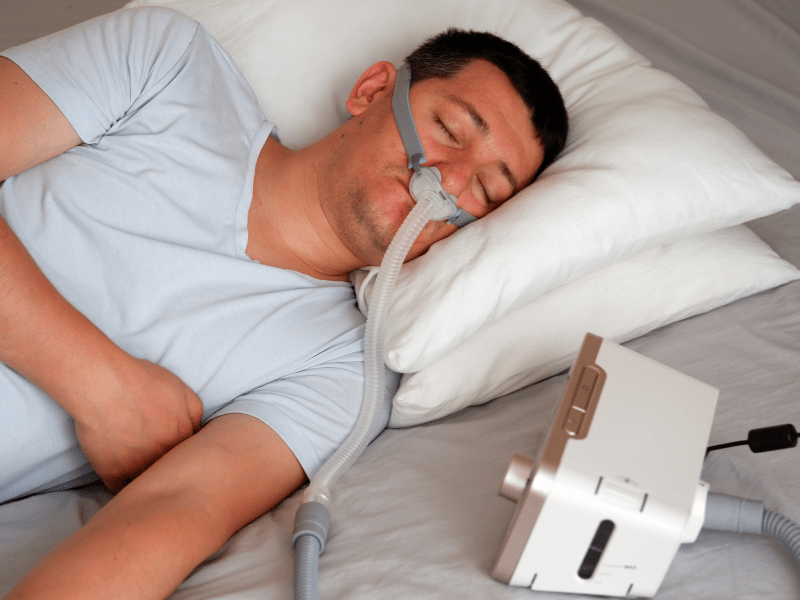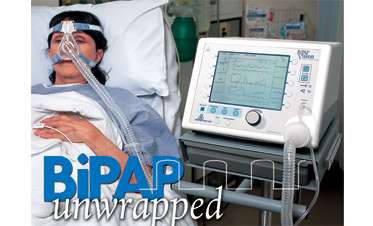Bipap vs. CPAP: Which Is the very best for Your Rest Condition?
When browsing the complexities of rest conditions, the choice in between BiPAP and CPAP therapy is an important consideration. While CPAP gives a stable air movement appropriate for obstructive rest apnea, BiPAP's double stress settings might enhance convenience for those with even more elaborate respiratory concerns.
Comprehending Rest Disorders
Sleep conditions incorporate a variety of problems that disrupt regular rest patterns, impacting both the quality and period of rest. These problems can materialize in various kinds, including sleeping disorders, sleep apnea, narcolepsy, restless leg syndrome, and parasomnias. Each problem provides one-of-a-kind difficulties, usually resulting in substantial daytime fatigue, cognitive disability, and psychological disruptions.
Sleeping disorders is defined by trouble falling or staying asleep, while sleep apnea includes duplicated interruptions in breathing during sleep, usually leading to fragmented rest. Narcolepsy, on the other hand, is marked by extreme daytime drowsiness and abrupt sleep attacks. Agitated leg syndrome triggers uneasy experiences in the legs, motivating an uncontrollable desire to move them, which can likewise impede the capability to sleep.
The influence of rest problems expands beyond individual health, influencing overall productivity, connections, and high quality of life. Comprehending the certain nature of each condition is vital for reliable medical diagnosis and therapy. As sleep health and wellness ends up being progressively recognized as an important component of overall health, addressing these problems is essential for enhancing both rest quality and everyday functioning.
How CPAP Works
Continual Favorable Air Passage Pressure (CPAP) therapy is regularly used as a main treatment for obstructive rest apnea (OSA) The system of CPAP includes the use of a machine that supplies a consistent stream of air with a mask worn throughout sleep. This airflow keeps favorable stress in the airway, preventing the collapse or blockage of the throat that can happen throughout sleep.
When a patient inhales, the CPAP maker provides a continual flow of air, ensuring that the air passage remains open - BiPAP Rental. This not just minimizes the symptoms of OSA, such as snoring and interrupted sleep patterns, however also minimizes the involved wellness risks, consisting of cardiovascular difficulties and daytime fatigue
The stress settings on a CPAP equipment can be customized to satisfy individual client needs, typically determined with a rest study. Individuals typically go through titration researches to discover the ideal stress level for their special problem. Regular follow-up and modifications might be necessary to make sure performance and convenience. Overall, CPAP therapy has actually been revealed to dramatically enhance the top quality of sleep and overall wellness for individuals experiencing from obstructive sleep apnea.
Exactly How BiPAP Works
BiPAP, or Bilevel Favorable Respiratory Tract Pressure, is a specific kind of non-invasive ventilation that is particularly valuable for individuals with conditions such as intricate sleep apnea or respiratory problems. Unlike CPAP, which provides a constant stream of air at a solitary stress, BiPAP provides two unique pressure settings: a greater inspiratory pressure for breathing read the full info here and a lower expiratory pressure for exhalation. This dual-pressure approach permits for much easier breathing, minimizing the initiative required throughout exhalation.
The gadget operates through a mask fitted over the nose or mouth, linked to a maker that produces air stress. When the patient inhales, the device delivers the greater stress to help with airflow, ensuring that the respiratory tract continues to be open. Upon exhalation, the maker automatically reduces the stress, making it a lot more comfortable for the patient to take a breath out.

Secret Distinctions In Between BiPAP and CPAP

In comparison, BiPAP (Bilevel Favorable Airway Pressure) uses 2 different pressure setups: one for breathing and a lower one for exhalation. This dual pressure system permits even more comfy breathing, particularly for clients who struggle with exhaling versus a constant stress. BiPAP is frequently suggested for individuals with intricate sleep apnea, chronic obstructive lung condition (COPD), or those who require additional support during rest.
In addition, the intricacy of BiPAP devices generally leads to a higher expense and needs a lot more mindful titration than CPAP. BiPAP Rental. Recognizing these vital distinctions can assist in identifying which tool might be extra ideal for details rest conditions, establishing the groundwork for educated treatment decisions
Choosing the Right Treatment
The choice between BiPAP and CPAP therapy largely hinges on the specific features of the rest disorder, the person's general navigate to this website health, and their convenience with the tool. CPAP, which supplies a constant stream of air, is frequently prescribed for obstructive rest apnea (OSA)
Conversely, BiPAP provides two degrees of stress: one for breathing and a reduced one for exhalation. This double stress system is advantageous for people with complex rest apnea or those that experience difficulty breathing out versus a continual stress. Furthermore, BiPAP is often advised for people with respiratory conditions, such as chronic obstructive lung illness (COPD), where varying pressure settings can enhance convenience and conformity.
Inevitably, a comprehensive examination by a sleep expert, including a rest study, can aid figure out which therapy lines up best with the client's needs. Variables such as comfort, ease of use, and specific clinical conditions must Source additionally be considered to enhance treatment end results.
Final Thought
In summary, both BiPAP and CPAP offer distinct objectives in the monitoring of rest disorders. CPAP is effective for obstructive sleep apnea with constant air movement, while BiPAP supplies twin pressure setups that enhance convenience for those with intricate sleep apnea or respiratory system issues. The choice in between these treatments need to be guided by specific needs and conditions, necessitating a comprehensive assessment by a sleep specialist to make certain optimum therapy results and enhanced top quality of rest.

Overall, CPAP treatment has actually been shown to significantly boost the quality of sleep and general health for individuals enduring from obstructive rest apnea.
BiPAP is commonly advised for clients with complex sleep apnea, persistent obstructive lung disease (COPD), or those that call for added support throughout rest.
CPAP is efficient for obstructive sleep apnea via constant airflow, while BiPAP supplies dual pressure setups that improve comfort for those with complicated rest apnea or respiratory problems.